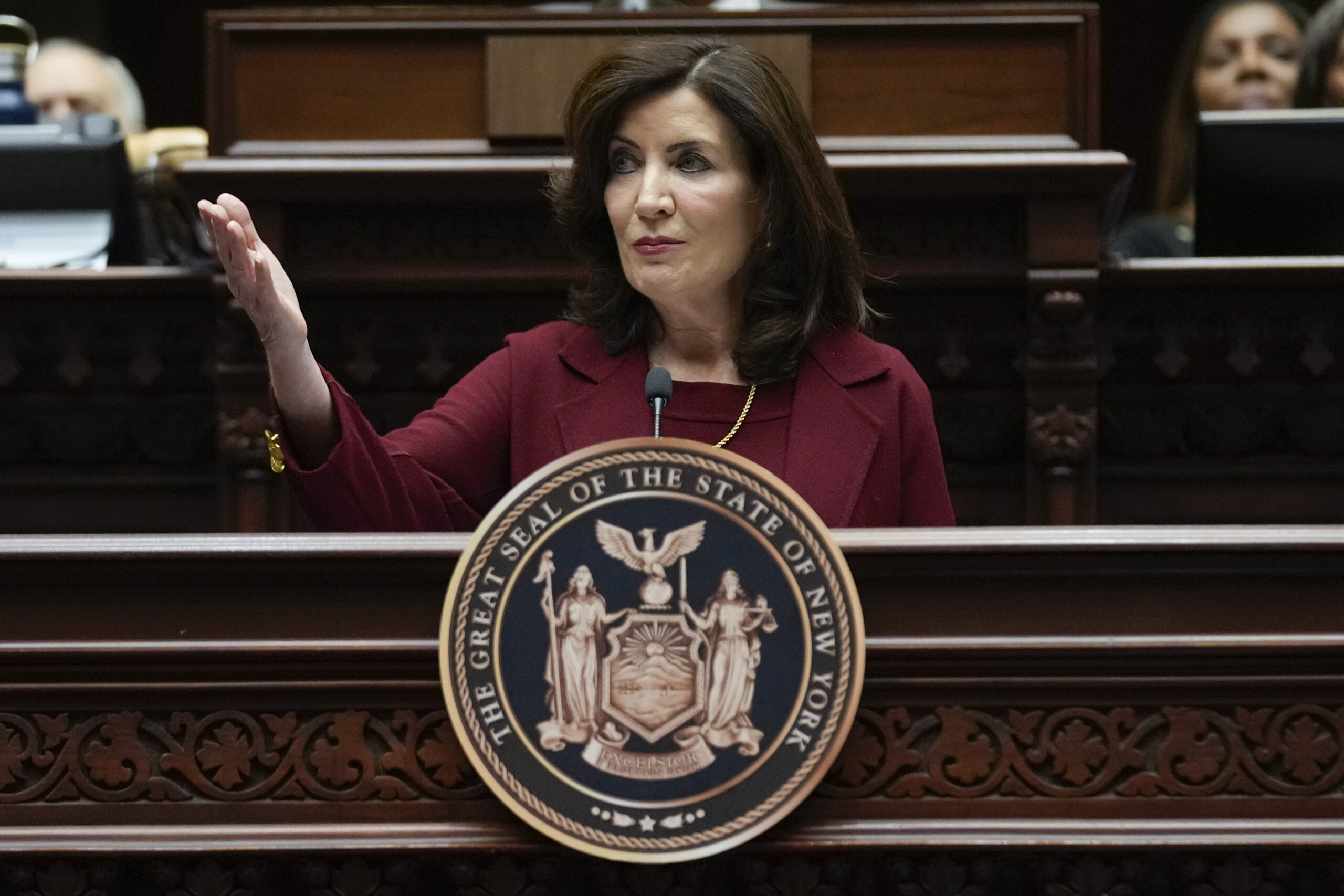In unveiling her 2024-2025 proposed state budget, New York State Gov. Kathy Hochul missed an opportunity to make a dent in Long Island’s high cost of living. Rather than easing the tax burden on Long Islanders, the governor offered a newer version of last year’s rejected affordable housing proposal and also ended a critical provision protecting Long Island schools from serious budget shortfalls.
Last week, the governor—while awarding Downtown Revitalization Initiative grants to Kings Park, North Bellport and Brookhaven Town, and Mineola—announced her new housing policy known as “Pro-Housing Community.” She noted that all three of these areas had applied for the Pro-Housing Community designation. Further, she would require that only those municipalities who requested this designation could participate in applying for the $650 million in discretionary state grant funding.
While the housing policy has a new name, it has not changed much from last year’s goal of increasing New York State affordable housing by 1% or 800,000 units. What has changed, however, is no state agency can override local zoning powers pertaining to the creation of affordable housing.
While encouraging transit-oriented housing near commuter railroad stations, the governor also seeks to invest $500 million to create 15,000 housing units on state land. However, as for the $650 million, the requirement for municipalities to access the funds is certification as a Pro-Housing Community. This entails the municipality to show, for the first time, a commitment to identifying impediments to housing growth or proof that permits were issued to specifically increases its housing stock by 1% over the past year, or 3% over the past three years.
What is missing is the economics of housing construction. Critical to affordability are property taxes, infrastructure expenses such as sewers and roads, and the higher cost of construction materials and labor. Until these elements are addressed, affordability will remain a challenge. And, at the top of the this list are taxes, especially school taxes.
While Gov. Hochul raised Long Island school aid by $5 billion or 3.04%, the increase failed to keep pace with the 3.7% inflation rate. Furthermore, 44 Long Island schools are facing school aid cuts, leaving hard choices to curb school programs or raise taxes, which the state comptroller has determined could not increase by more than 2%.
School districts are aware that the past three years of aid largely originating from federal pandemic funds would not be replaced by New York State when this money dried up. However, few expected an increase that would not cover the cost of inflation—and even fewer expected actual school aid cuts for 36% of Long Island school districts.
These aid cuts resulted from Gov. Hochul’s proposal to eliminate the “hold harmless” provision that—regardless of state aid levels—school districts could depend on receiving the same aid as in the previous year. Removing “hold harmless” would force school districts with budget reserves to spend those reserves, saving the governor from dipping into New York’s $20 billion reserves, which she expected to need for upcoming state budget deficits.
Another missed opportunity to begin making New York affordable.
Martin Cantor is director of the Long Island Center for Socio-Economic Policy and former Suffolk County economic development commissioner. He can be reached at [email protected].
Image and article originally from libn.com. Read the original article here.

